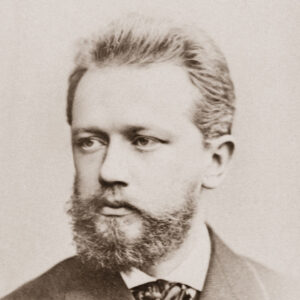
Nikolai Rimsky-Korsakov’s Capriccio Espagnol will open the April 5-6 spring concerts by the Southern Arizona Symphony Orchestra directed by Linus Lerner. The Capriccio started as a work for violin and orchestra, and later changed to a Spanish compilation of folk dances. The scoring is for a standard orchestra but with added percussion. Rimsky-Korsakov and Berlioz are regarded as the pioneers of modern orchestration, not just adding instruments but pushing the limits and capacities of every performer.
The five-movement work is divided into two sections. The A section starts with an Alborada, which is a Spanish morning dance in two time with accents on the first beat. There are cadenzas for clarinet and violin. This is followed by a Variazoni sequence, starting with solo horn and followed by variations of this theme by other instruments and orchestra. Then comes a reiteration of the Alborada but with changes in key and featured instruments.
Section B starts with “Scena e canto gitano” (Scene and Gypsy Song) and has five cadenzas: brass, violin, flute, clarinet, and harp played over sustained percussion. Following is a fast gypsy dance in three time with a timpani crescendo leading directly into the Fandango asturiano, a fast dance in the time originating in the Austurias area of northern Spain. At the mid-point the Alborado in two time returns as a coda going from vivo to presto. There are no pauses between movements, attacca being the musical term.
Capriccio Espagnol is an orchestral showpiece allowing all sections to stand out. The added percussion is precedent-setting, some of the sounds originating in Spain and others arriving via Ottoman invasions of Europe, as did coffee drinking. Capriccio Espagnol is dedicated to the original orchestra members, each by name, as they applauded each movement at first rehearsal. It premiered in 1887, one year prior to Rimsky’s most famous work, Scheherazade, and there are various similarities between the two works.

Many composers have used Shakespearian plays as the basis for a variety of musical compositions, and Pyotr Ilyich Tchaikovsky is one with his Romeo and Juliet Overture-Fantasy, which will close the concert. Where Rimsky-Korsakov was a Russian Nationalist composer and member of Kuchka (the Group of Five), which tried to minimize European influences, Tchaikovsky used traditional sonata form with some Slavic hints. His Romeo and Juliet comes early in his career and is considered a symphonic poem in sonata form. He was motivated and inspired by Mily Balakierev, his teacher and Kuchka member.
The work has no opus number and is labeled TH 42 (Tchaikovsky Handbook), uses three ideas from the play, and is divided into five parts. The first is an introduction in F to E minor portraying Friar Laurence, and the following in B minor depicts the forceful-agitated conflict of the Montague and Capulet families with sword-fighting cymbal crashes. The well-known love theme in D-flat minor is Part 3 and is passionate and anxious. The English horn depicts Romeo, and flutes portray Juliet. Part 4 is a recapitulation that reviews the conflict, Friar and love themes in E minor. Two big cymbal crashes signify the suicides of the two lovers and is followed by a finale of battle music. Instead of ending the work here, Tchaikovsky adds a coda (epilogue) startling as a slow dirge with triplet figures on the timpani, followed by memory of the lovers, climaxing with a great timpani swell leading to a sharp-punctuated orchestra finale.
There are three versions of Romeo, from1870, 1872 and1886, and this final version was premiered by Mikhail Ippolitov-Ivanov. For years it was not well-received in Europe, but this slowly changed and today Romeo and Juliet is extremely popular. Jimmy Dorsey recorded “Our Love” based upon the love theme.
In between these two popular works will be the Piano Concerto No. 1 in E-flat major of Franz Liszt with Pervez Mody as soloist, and also the winner of the Dorothy Vanek Youth Concerto Competition, to be announced. The concert will be performed at SaddleBrooke on Saturday, April 5 at 7:30 p.m in the DesertView Performing Arts Center, and in northwest Tucson on Sunday, April 6 at 3 p.m. in St. Andrew’s Presbyterian Church.
